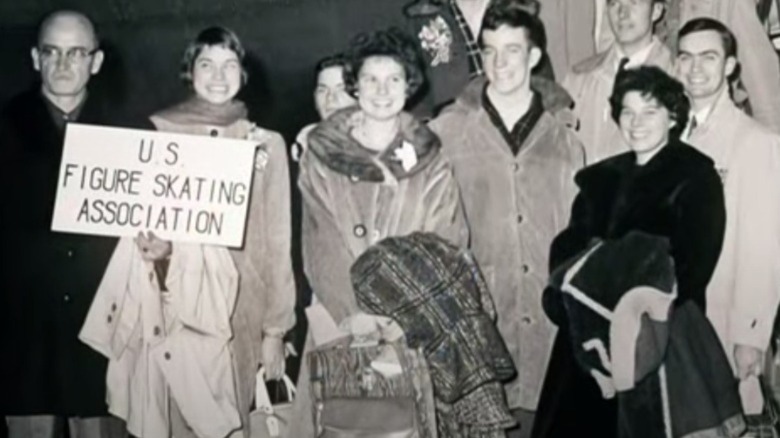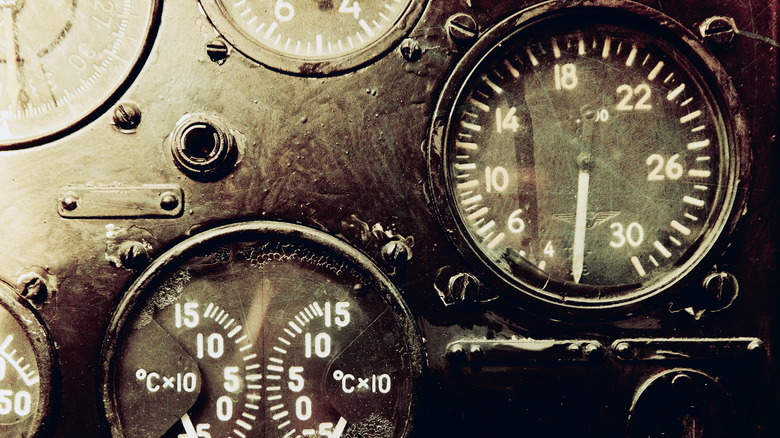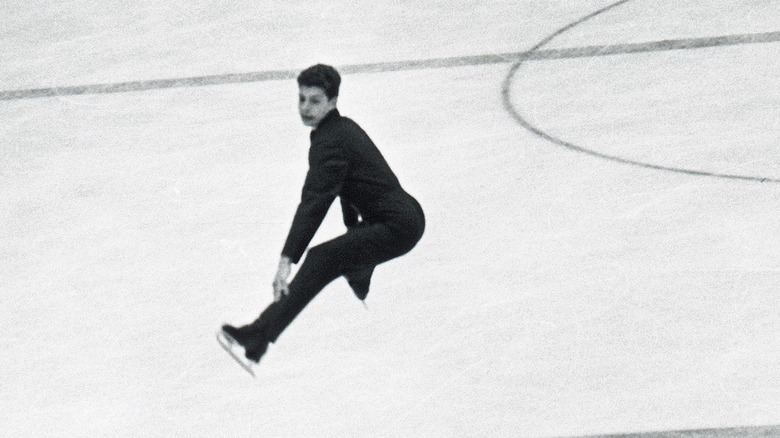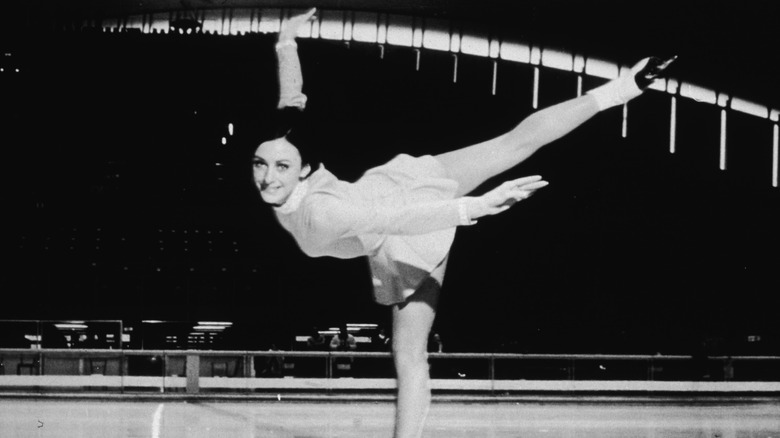The Tragic Plane Crash That Killed The US Figure Skating Team
On February 15, 1961, the U.S. figure skating team was headed to the world championships in Prague. They left Idlewild Airport in New York City on Sabena Flight SN548 the previous day and were due to arrive at Brussels-Zaventem Airport.
The bustling plane was filled with not just star figure skaters, but their families, coaches, and judges, all looking forward to the important contest in the year following the 1960 Olympics in Squaw Valley, where some of them had competed, according to the Los Angeles Times. Many of the medalists in that Olympics had retired from the sport, leaving this up-and-coming crop of future stars, including the 16-year-old Laurence Owen, who just a few days earlier had appeared on the cover of Sports Illustrated as "America's most exciting girl skater."
But there would be no world championships that year, and the plane carrying these skaters would never land. Instead, the craft nose-dived into a field less than two miles away from Brussels, killing all 72 people on board and an additional person on the ground (via This Day in Aviation). A copy of the Sports Illustrated issue was found among the wreckage.
Three turns and a sudden dive
To this day, the cause of the plane crash has never been determined. But if you had been watching the 707 plane from the ground at the Brussels-Zaventem Airport, you might have sensed that something was wrong. According to This Day in Aviation, three miles short of the runway, the plane suddenly retracted its landing gear and began rising up, accelerating. The plane then made three full circles, and each time the angle of bank increased, so by the last turn the plane was nearly on its side. The plane then leveled off, pitched up abruptly, and dove to the ground.
Though the cause of the crash is officially unknown, given the behavior of the pilot it's assumed that it was due to mechanical error in the flying controls. The Federal Aviation Administration concluded it was likely the result of an issue with the stabilizer adjusting mechanism.
"If such a malfunction occurred and the split flaps and spoilers procedure (inboard spoilers and outboard flaps extended) not employed, the only means to prevent the aircraft from pitching up into a stall would be to apply full forward column and enter a turn in either direction," the FAA wrote for its comment in the flight's official accident report (quoted at This Day in Aviation). The split flaps and spoilers response was not used, it concluded, based on the plane's impact position. According to this report, during the plane's initial test flight, a slight issue with the stabilizer had been noticed and corrected, whereupon subsequent flights proceeded normally.
Rebuilding American skating dominance
The crash's impact on figure skating was devastating. At the time, the United States dominated figure skating internationally. In the 1960 Olympics, Americans won gold medals for both the men's and women's individual competitions, plus a bronze medal for individual women and a bronze for pair's mixed (per the Olympics website).
But the crash meant that America's best skaters had been killed. An official in the American Skating Union told UPI at the time that it would take at least three years for the U.S. to develop skaters to fill their footsteps. In the 1964 games, Americans didn't take home a single gold or silver medal in the sport, though they managed two bronzes (via Olympics).
The sport focused on rebuilding. Barbara Roles, who retired after her bronze medal finish in the 1960 Olympics, returned to the sport. And 12-year-old Peggy Fleming, whose coach, Bill Kipp, died in the crash, worked on developing her skills for the future. "They had so much going for them, and they were gone, and the coaches were gone, so it motivated us to fill the gap of what we lost," Fleming told "Today" on the 60th anniversary of the plane crash.
The legacy of Sabena Flight 548
Eight years later, the hard work paid off, when a 19-year-old Fleming (above) took home gold in the 1968 Olympic games. "(It was) like, we've arrived back," she said of her victory that year. "I think that gave hope to a lot of skaters that we can build again."
Part of that rebuilding came in the form of the Sabena Flight 548 memorial fund, which continues to have an impact on the sport today. Fleming's training was partially paid through the fund's scholarship program, which sponsors athletes who can't afford pricey figure skating lessons. The fund has since supported athletes like Kristi Yamaguchi, Scott Hamilton, and Meryl Davis and Charlie White, according to US Figure Skating. Today the fund supports athletes at every level in skating, from promising young figure skaters to future Olympic stars. The memorial fund has raised more than $20 million since it was first founded.
"We keep ... supporting the memorial fund because we don't want it to just be people that are wealthy doing this," Fleming told "Today." "Everyone should be allowed to participate in their sport."



